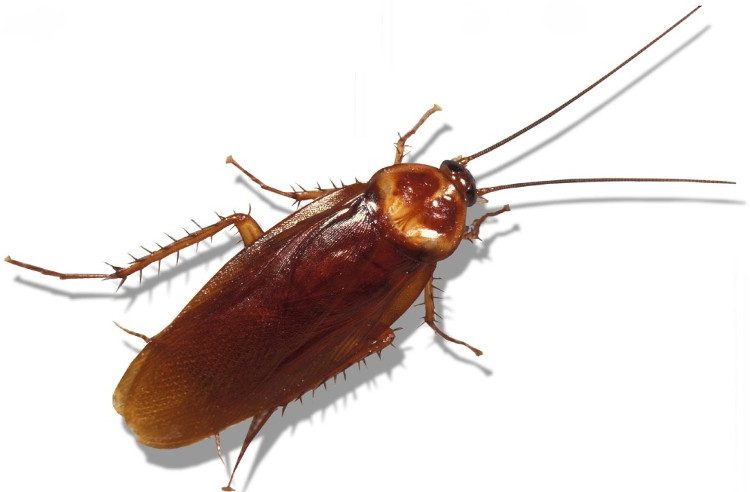Professor Coby Schal, an expert in entomology at North Carolina State University, has provided an explanation for this phenomenon.
Why Do Cockroaches Lie on Their Backs When They Die?

When cockroaches grow old and die, their center of gravity pulls their back down to the floor, causing them to flip over.
Professor Coby Schal suggests there are two main reasons:
- First, cockroaches have a slightly rounded, smooth back and a flattened body that allows them to curl up and hide in narrow crevices and cracks.
- Second, cockroaches have a large body weight due to their long legs, so most of their weight is concentrated around their back. When they grow old and die, their center of gravity pulls their back down to the floor, causing them to flip over. The smooth, rounded back and weakening muscles make it impossible for them to flip back, especially when lying on a slick surface. Living on glossy tile surfaces, cockroaches find it very difficult to move if they become disoriented or end up on their backs. The worst-case scenario is lying on a smooth surface where they have nothing to grip with their legs to flip back, unlike in nature, where they are surrounded by grass, dirt, branches, organic debris, etc.
Do Dead Cockroaches Always Lie on Their Backs?
Not all cockroaches lie on their backs in their final moments. For example, in the wild, very few cockroaches end up on their backs when they die. This is because their main predators at this point are hunters (such as geckos, bats, spiders, scorpions, etc.), not humans with insecticides.
Moreover, in the wild, there are many objects on the ground (such as leaves, branches, organic debris, etc.). Once flipped over, cockroaches can cling to these objects and return to their normal position.
According to Newsobserver, the types of pesticides we use to kill cockroaches can have similar effects. Most pesticides contain neurotoxins—toxins that can cause shock and muscle spasms, ultimately forcing cockroaches to lie on their backs. A healthy cockroach can easily flip back over, but for those affected by toxins, this becomes impossible due to their weakening muscles, combined with their smooth, rounded back and significant body weight.
Cockroaches remain a nuisance for us, especially in the kitchen. A female cockroach can lay 40 to 60 eggs in each breeding cycle. They do not need males to reproduce. Furthermore, cockroaches can live for up to 2 years under ideal living conditions. Their lifespan also depends on food and habitat.





















































